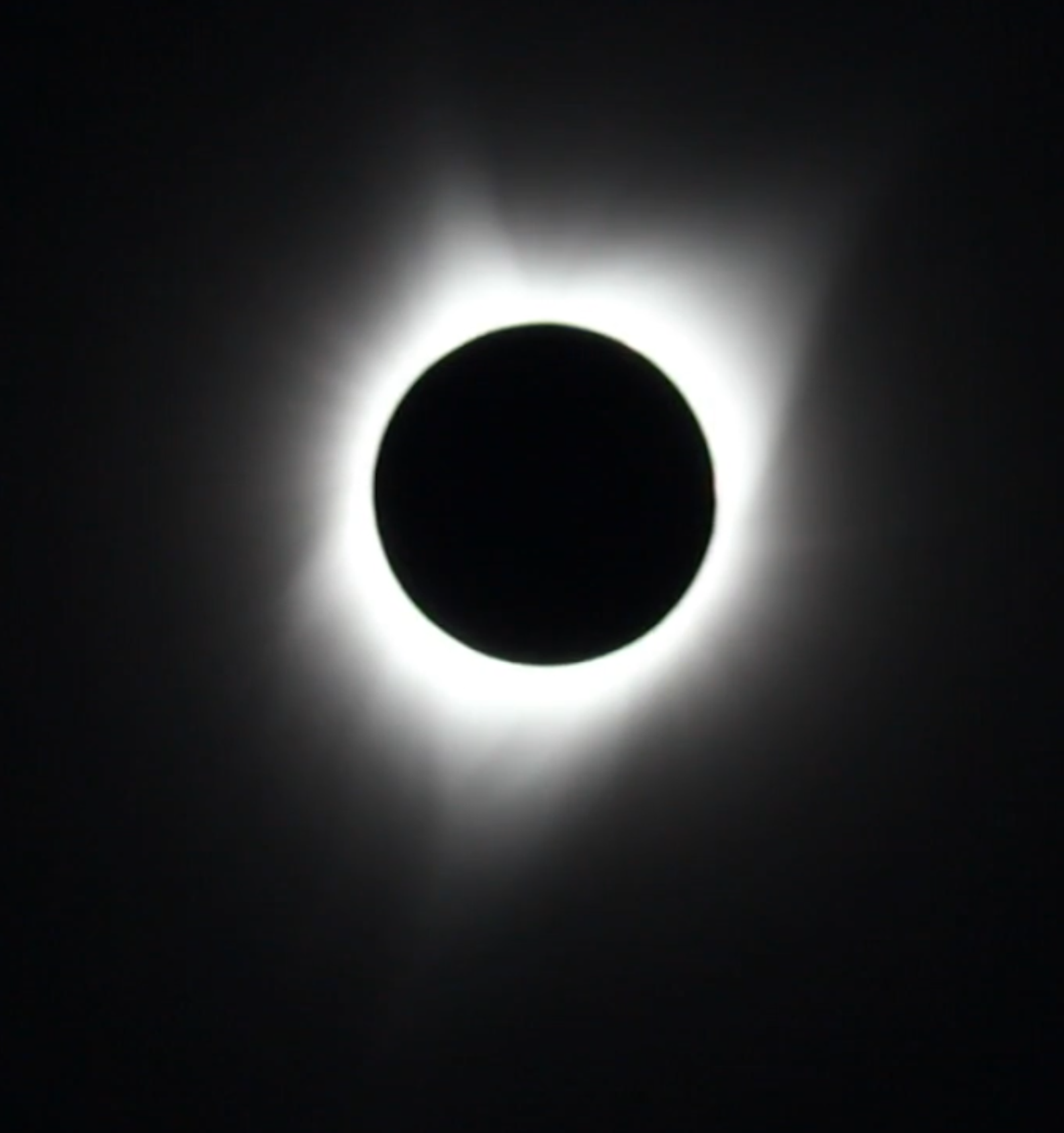Guide to April 8th, 2024 Solar Eclipse
By now, you’ve probably heard about the total solar eclipse coming on April 8th. The eclipse’s path will cross 15 different states in the US, and there won’t be another so widely visible in North America until 2045!
These is a screen grab from a video I took of a total solar eclipse in August, 2017.
Total Solar Eclipse
During a total eclipse, the disc of the sun is completely covered by the moon. The sky goes dark during this period, and it’s only during this time that you can (and should) view the eclipse without any eye protection. Some planets and even bright stars are often visible. All eclipses are great to witness, but total solar eclipses are definitely the most awe-inspiring. Aside from the sky going quite dark, one of the other exciting things about a total eclipse is that you can see the sun’s corona, which otherwise is not viewable without special viewing equipment. The corona is part of the sun’s atmosphere which is much less dense and much dimmer than the surface of the sun. It’s important to know that to view a total solar eclipse, you must be in the narrow path of the central shadow. If you are just outside of that, it only appears as a partial eclipse. If you’ve seen a total eclipse, you know that no words, picture, or video could come close to doing it justice. That doesn’t stop us from telling others about them though - if you haven’t personally witnessed one but have family or friends that have, they’ve surely tried to explain how amazing it is!
There are multiple maps available online, but I’ve found the interactive map put together by Xavier Jubier to be the best out there. It’s great for precision planning as opposed to the less detailed maps I’ve seen out there. Note that to witness the maximum eclipse, you’ll want to be in the path of the central shadow, the edges of which are indicated with red lines. The closer you are to the shadow center (blue line), the longer the duration of the eclipse. For example, depending on where along the path you are, the eclipse could be around 4.5 minutes if you are in the center, but closer to 1.5 minutes near the edge. If you follow the links to the interactive maps, you can then click anywhere on the map to get details such as the exact duration, start and end time, and more.
Path of Total Solar Eclipse on April 8th, 2024. Click here for interactive map.
April 8th, 2024 - Total Solar Eclipse
The path of this total eclipse crosses Mexico and Texas and extends NE to Maine and parts of Canada.
INTERACTIVE MAP
Planning Ahead
Immediately after the total eclipse of 2017, I headed from my viewing location in Wyoming to Denver to catch a flight back home. I didn’t make it very far before being stopped in the traffic. I spent a total of at least 4 hours standing still on the highways, and couldn’t make it back to Denver in time for my flight. Getting to a viewing spot within the narrow path of the eclipse shouldn’t present much of a problem, since arrivals are spread out over hours and even days before the eclipse. After the magic ends though, the majority of the millions of people that have travelled for the spectacle, are now leaving and heading back towards the major cities. If you’ve ever been stuck in a parking garage after a major event, you have an idea of what it’s like, but it’s worse when you’re in a rural area without the infrastructure to handle the volume of traffic. All of this to say, I recommend having an “escape plan” for after the eclipse. Consider staying put in the area for an extra day, and you will likely avoid this traffic problem. Possibly more important than having an escape plan though, is planning and booking any travel and lodging arrangements you might need as soon as possible. Being only 2 months away, I don’t imagine you’ll be able to find any vacancies in hotels or campgrounds anywhere near the path of totality, so you may have to find a friend to stay with, or a good place to sleep in your vehicle.
Nearly 20 miles to the nearest town in middle-of-nowhere Wyoming, and this was the line of stop-and-go traffic I was in. It’s not a bad idea to stay put for the rest of the day, or even overnight before leaving, especially if you’re in a rural area.
Eclipse Glasses and Eye Safety
Aside from the short period of time of maximum eclipse during a total eclipse, eclipse glasses or an alternate method of solar viewing protection should be implemented. I recommend obtaining glasses as soon as possible. With the last total eclipse in the US, the demand went up and the supply was low, so I saw a lot of prices shoot up significantly, and at times sellers ran out. The suppliers will likely be better prepared this time, but better to be safe than sorry. You can find a guide on where to buy glasses here. It’s also a good idea for everyone in your group to have their own pair, instead of having to take turns viewing. Find more information on eclipse safety from NASA here.
A demonstration of eclipse glasses use. Glasses or other methods for solar viewing should be used for ALL types solar eclipses. Only during the few moments of maximum eclipse during a total eclipse can glasses come off.
I hope this guide has provided you with some helpful information as you plan for the April 8th total eclipse. If you have any questions just let me know!



